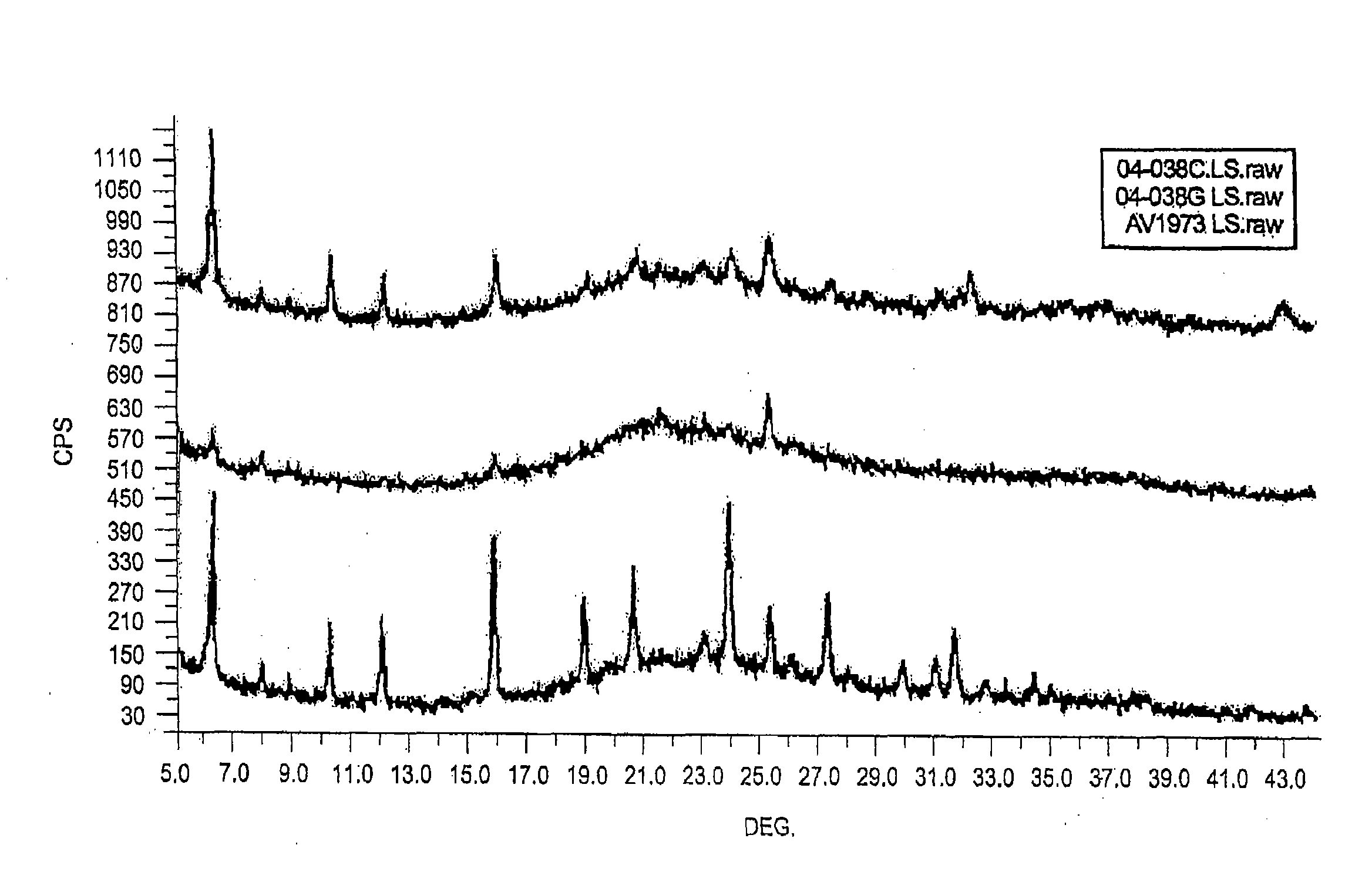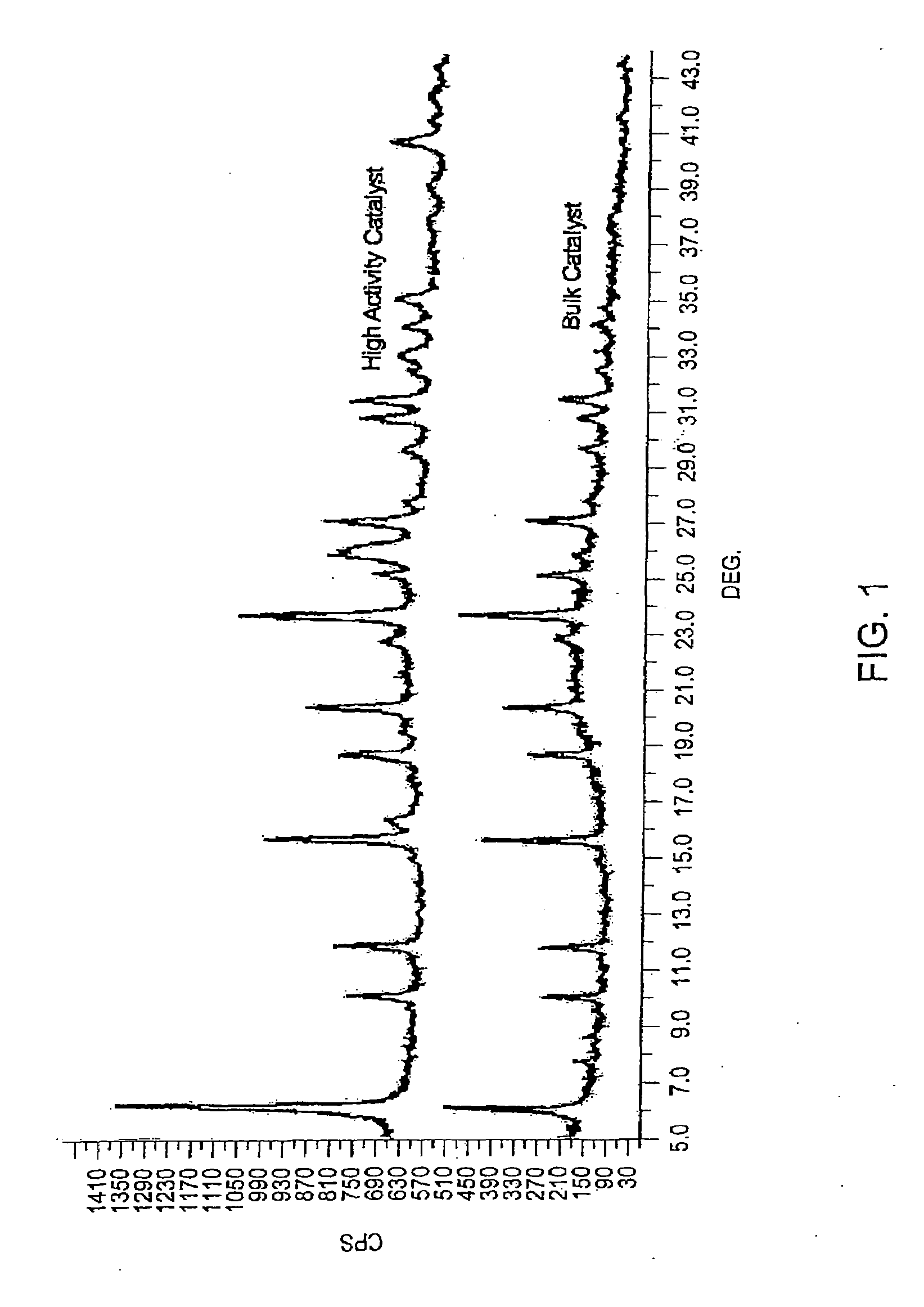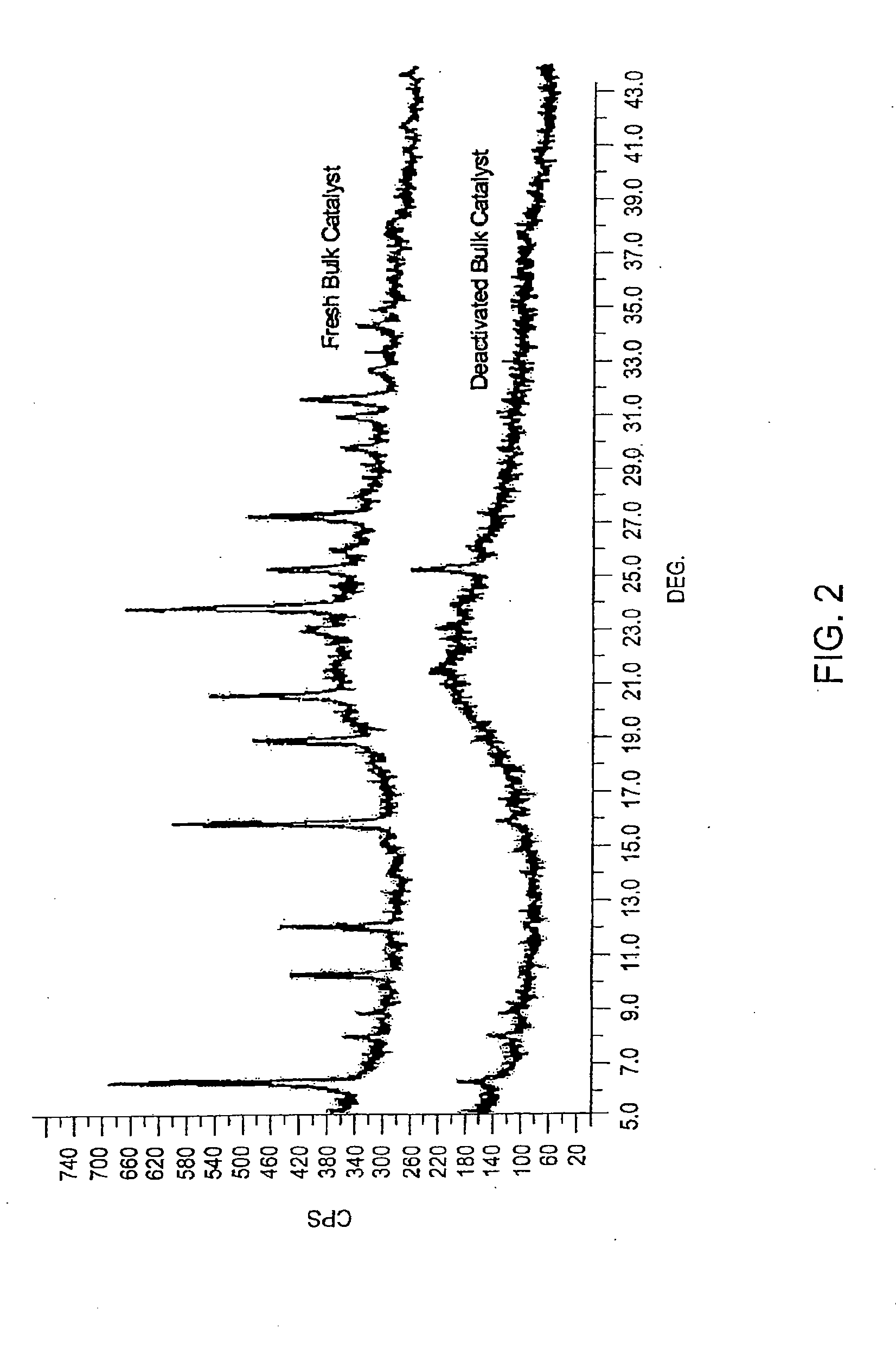Additives for metal contaminant removal
a technology for addingitives and metals, applied in the direction of metal/metal-oxide/metal-hydroxide catalysts, hydrocarbon oil treatment products, etc., can solve the problems of metal contaminants in feedstock, serious problems, and heat of catalysts, and achieve high activity catalysts, high activity catalysts, and the effect of increasing the performance of bulk catalysts
- Summary
- Abstract
- Description
- Claims
- Application Information
AI Technical Summary
Benefits of technology
Problems solved by technology
Method used
Image
Examples
example 1
Hydrotalcite-like Compounds
[0091]Hydrotalcite compounds were prepared following the methods described herein and in U.S. Pat. No. 6,028,023.
[0092]MgO powder (having a surface area of about 100 m2 / g) (MAGOX®, Premier Chemicals, Cleveland, Ohio) is slurried in water at a solids level of about 14%. Thereafter, 5.2% technical grade acetic acid is added to the MgO slurry.
[0093]Separately, pseudoboehmite (P2® Condea) is dispersed in water at a solids level of 8% to produce an alumina sol.
[0094]The MgO slurry and alumina sol are mixed in a container such that the molar ratio of Mg / Al of the preparation was 4:1. Additional water is added to the mixture to adjust the solids content of the mixture to about 9%. The mixture is heated to about 214° F. over a period of about 5 hours. Once heated, 8 dry basis parts of the resulting slurry was mixed with 2 dry basis parts of technical grade calcium hydroxide along with sufficient water to give a final solids content of about 10%. The mixture is the...
example 2
Silica- and Alumina-Containing Compounds
[0095]A metals trapping additive containing a calcium oxide active component was prepared by mixing, on an ignited basis, 3 parts calcium hydroxide, 3 parts pseudoboehmite alumina gel, 0.5 parts silica sol and 4 parts kaolin clay. Sufficient excess water was included such that the final solids was approximately 20 weight percent. The resulting slurry was spray dried to an average particle size of about 100 microns and calcined to a final LOI of about 5 weight percent. Attrition resistant microspheres with an ASTM 2 hour attrition of about 1.2, apparent bulk density of about 0.64 g / cc, a surface area of about 60 m2 / g, and a pore volume of about 0.54 cc / g were obtained. This substance is referred to herein as “Metals Trap B”.
example 3
Mixed Metal Oxides
[0096]Magnesium aluminate was prepared following the methods described herein and in U.S. Pat. No. 6,028,023.
[0097]MgO powder (having a surface area of about 100 m2 / g) (MAGOX®, Premier Chemicals, Cleveland, Ohio) is slurried in water at a solids level of about 14%. Thereafter, 5.2% technical grade acetic acid is added to the MgO slurry.
[0098]Separately, pseudoboehmite (P2® Condea) is dispersed in water at a solids level of 8% to produce an alumina sol.
[0099]The MgO slurry and alumina sol are mixed in a container such that the molar ratio of Mg / Al of the preparation was 4:1. Additional water is added to the mixture to adjust the solids content of the mixture to about 9%. The mixture is heated to about 214° F. over a period of about 5 hours. Once heated, 8 dry basis parts of the resulting slurry was mixed with 2 dry basis parts of technical grade calcium hydroxide along with sufficient water to give a final solids content of about 10%. The mixture is then spray dried...
PUM
| Property | Measurement | Unit |
|---|---|---|
| density | aaaaa | aaaaa |
| density | aaaaa | aaaaa |
| density | aaaaa | aaaaa |
Abstract
Description
Claims
Application Information
 Login to View More
Login to View More - R&D
- Intellectual Property
- Life Sciences
- Materials
- Tech Scout
- Unparalleled Data Quality
- Higher Quality Content
- 60% Fewer Hallucinations
Browse by: Latest US Patents, China's latest patents, Technical Efficacy Thesaurus, Application Domain, Technology Topic, Popular Technical Reports.
© 2025 PatSnap. All rights reserved.Legal|Privacy policy|Modern Slavery Act Transparency Statement|Sitemap|About US| Contact US: help@patsnap.com



